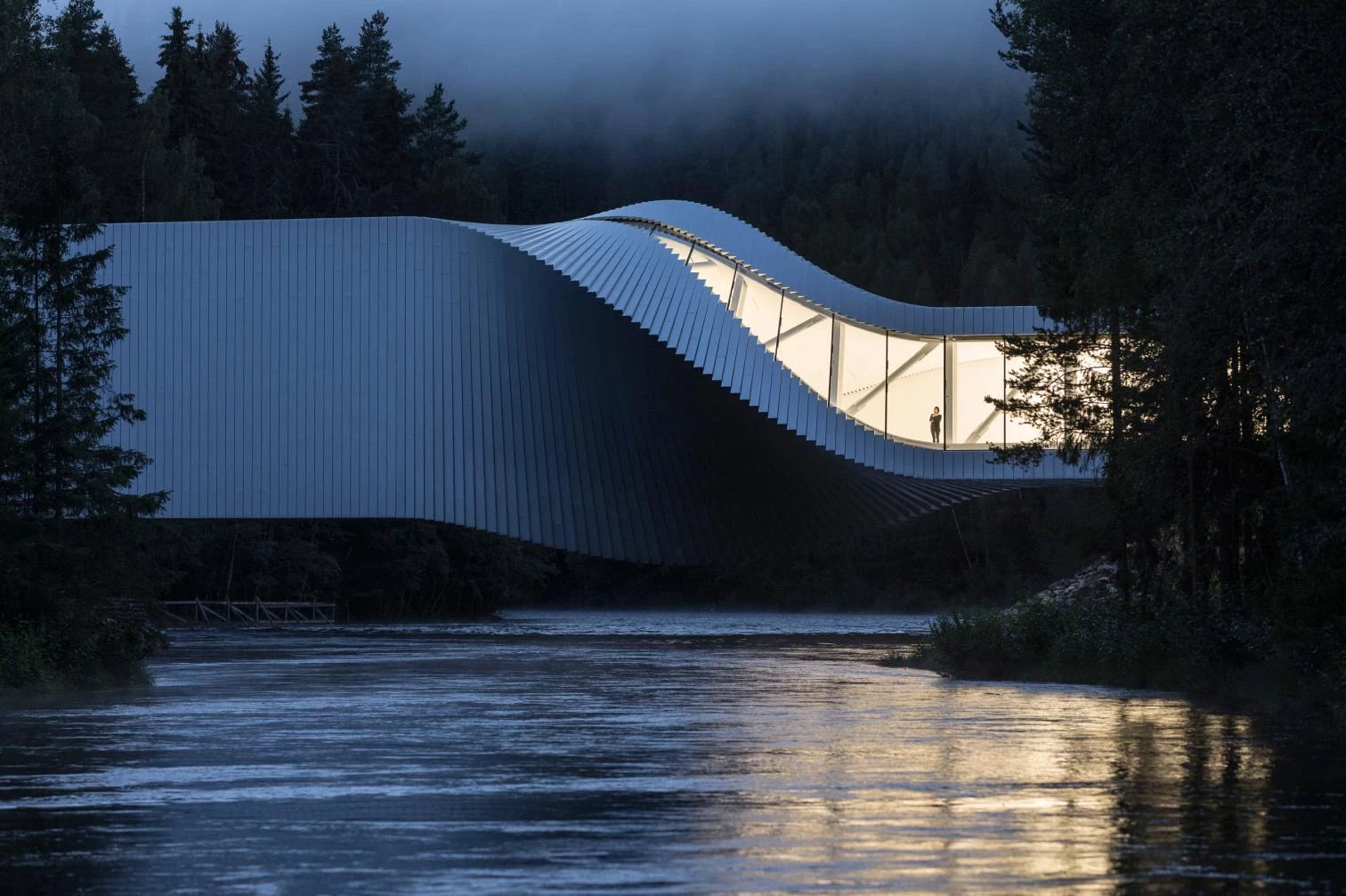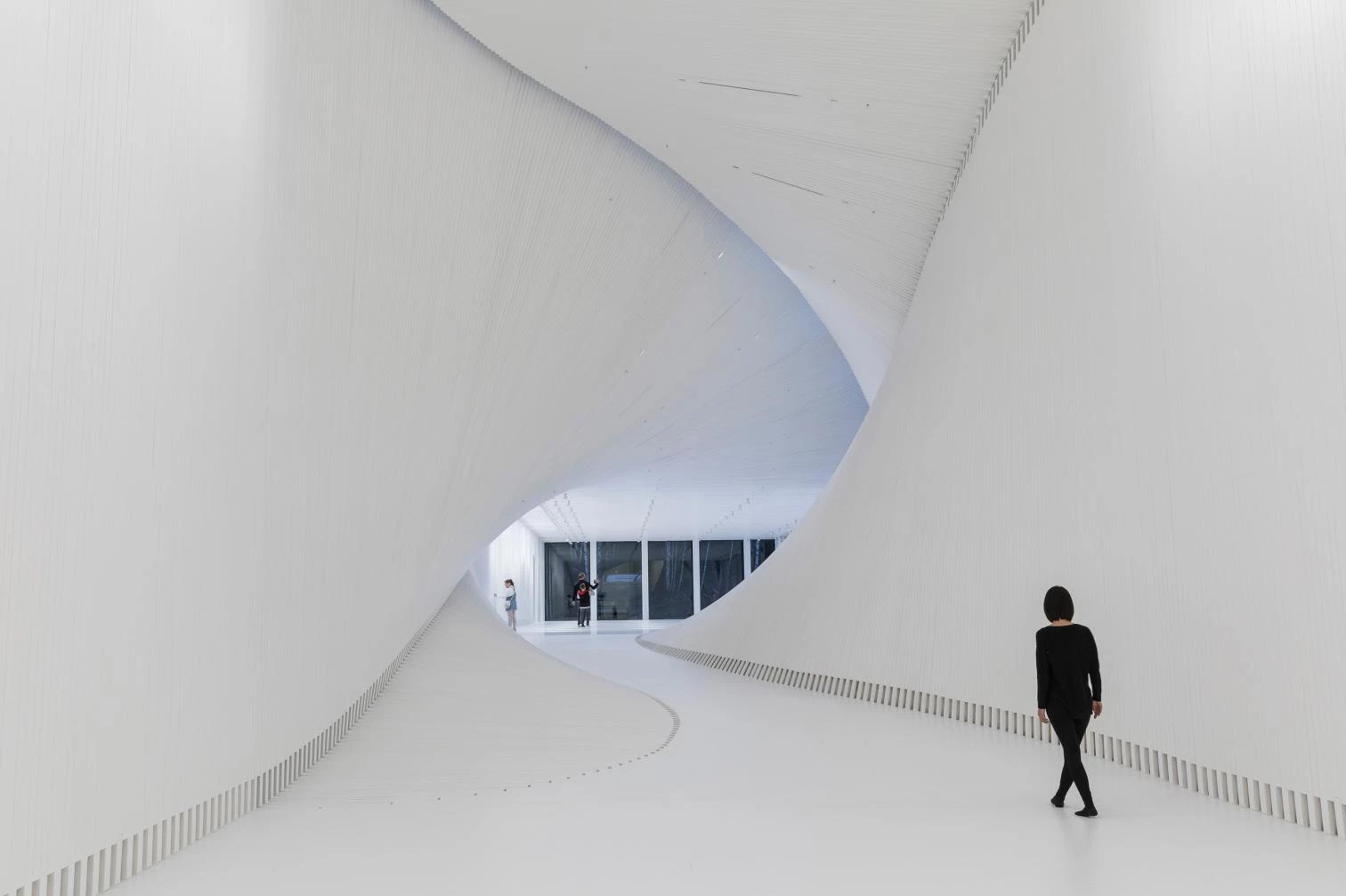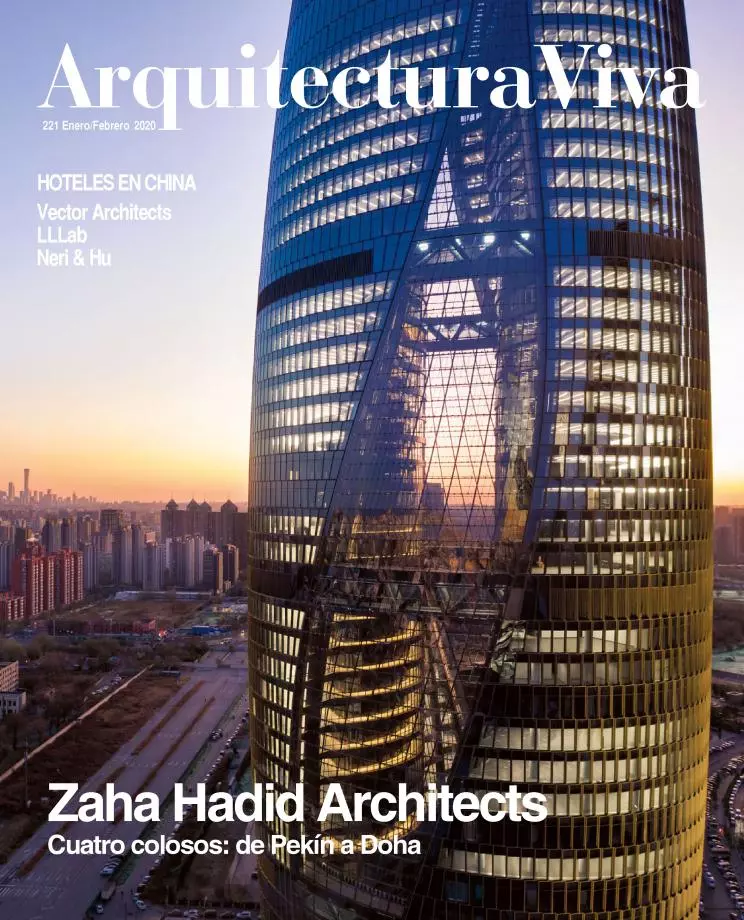
Among architects Bjarke Ingels is perhaps the last adorer of the fold; he is the unexpected link connecting our globalized times to those deconstructivist obsessions that had a heyday in the 1990s, in the heat of the theses that the philosopher Gilles Deleuze expounded in an otherwise incomprehensible book, Le pli. The fold remains prestigious, as suggested by some of the latest works of Ingels, prodigy of globalization, from the origami-like Via 57th West in New York City on to the waste-energy plant cum ski slope in Copenhagen; projects in which turns, sags, and warps make it possible to unify different planes and programs in a continuous form.
The recently dedicated Kistefos Museum in the small municipality of Jevnaker, 75 kilometers from Oslo, is the warped culmination of a cultural promenade through a lovely park where architecture, art, and landscape interact. Expressing this three-part dialogue of the enclave is precisely the mission of a building that is sculpture and nature at the same time, and is thought out both as a visual challenge to the landscape and as a physical prolongation of it. Designed like a bridge, the aluminum-clad volume crosses a river in a surprising gesture determined by the level and position of the two banks: one is woodland, the other a slope. The topographic change gives the pavilion its iconic image and enriches the interiors by generating three very different exhibition galleries, one of them with a warped skylight. Long live the fold?









